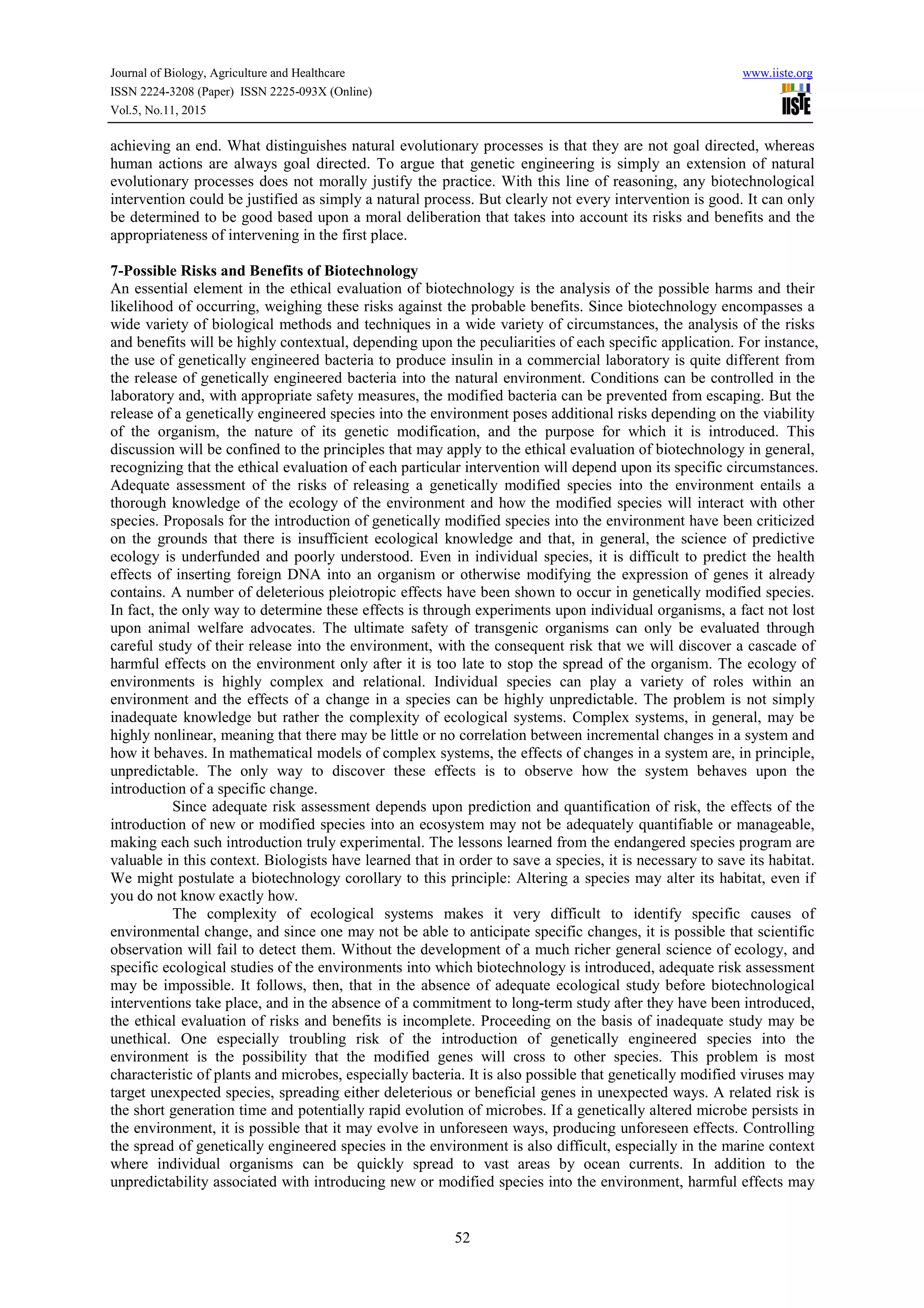This document discusses the ethical issues of biotechnology and possible risks and their management. It covers three main topics: 1) bioethics issues regarding understanding the science behind biotechnological interventions and balancing risks and benefits, 2) socio-economic issues regarding public perception and ensuring biotechnology respects socio-economic realities, and 3) cultural issues regarding how biotechnology modifies humanity's relationship with the environment and itself. The document argues that biotechnology holds promise but also risks, so its applications require consideration of ethical, social, economic, and cultural factors.







